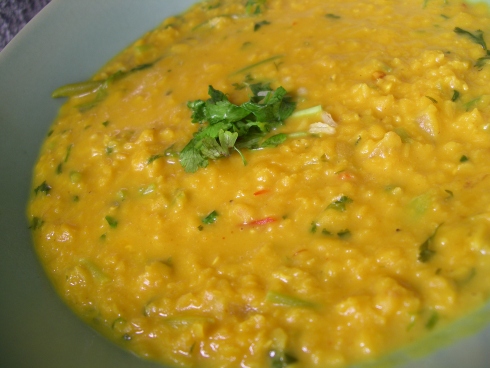This is an Italian street food I first tried in Liguria, close to the southern coast of France. A kind of savoury pancake made from ground chickpeas made into a batter with water and seasoned with olive oil, black pepper, salt and sometimes with rosemary. It is a brilliant snack food and perfect for those who have an allergy to gluten and cannot eat wheat, particularly in pasta-eating regions where avoiding gluten can be a real challenge.
Traditionally Farinata is cooked in a wide flat copper pan with a 4-5 cm lip in a hot wood fired oven. In Nice, just back across the border in France, a similar dish called socca is made with the same ingredients and cooked in an oven or in a skillet over flames. I’ve never tasted the French version but this is what the Ligurian one tastes like. I got the recipe from the back of a packet of chickpea flour i bought in Liguria and have tweaked it to taste more like the local vendors.
- 250g chickpea flour (about 2 cups)
- 750g water (about 3 cups)
- 2-3 tbsp olive oil
- Sea salt (1 tsp)
- Cracked black pepper (1/2 tsp)
- Rosemary minced (optional)
Put the ckickpea flour in a large bowl or jug, one with a spout if you can so it will make pouring easier, add the water beating as you go. Beat the mixture until you have a lovely smooth batter then add the salt & pepper and oil. Set aside for an hour or more to allow the batter to mature it can be left overnight. Heat the oven to very high and put a metal baking tray or a large paella pan into the oven to heat. If you have one, a paella pan is the nearest thing to the sort of pan used in Liguria.

When the pan is really hot lift out and drizzle with olive oil, to coat all over, then pour in enough batter to cover the surface of the pan in a thin layer, tipping side to side to ensure an even cover. Sprinkle with a little more salt and pop it straight back into the oven. Cook for 10-20 minutes, depending on how hot you can get your oven, until the edges and bottom are brown and crisp and the top is starting to take some colour. remove from the oven and tear or cut into pieces.
Sprinkle with a touch more of salt and pepper then serve with a glass of chilled wine or beer and you have a lovely start to the evening. If you have friends round you might want to put the next batch straight in the oven, this stuff disappears quickly. The quantity here makes enough batter for 4 batches cooked in a paella pan
Variation If you don’t want to use an oven it works fine on a stove top, i find using a heavy cast iron skillet works best. Once it is crisp on the bottom, turn it over and cook to just colouring on the other.

Tips for best and most authentic results make sure that the oven is as hot as it will go, the pan you use is very hot and use plenty of olive oil and salt. My oven will only go to 240c but with fan assisted gets pretty hot, hot enough to get the farinata just right. For really crispy ones make the layer of batter as thin as you can.
Tags: chickpeas, gluten free, Italian, snack food, Vegan













